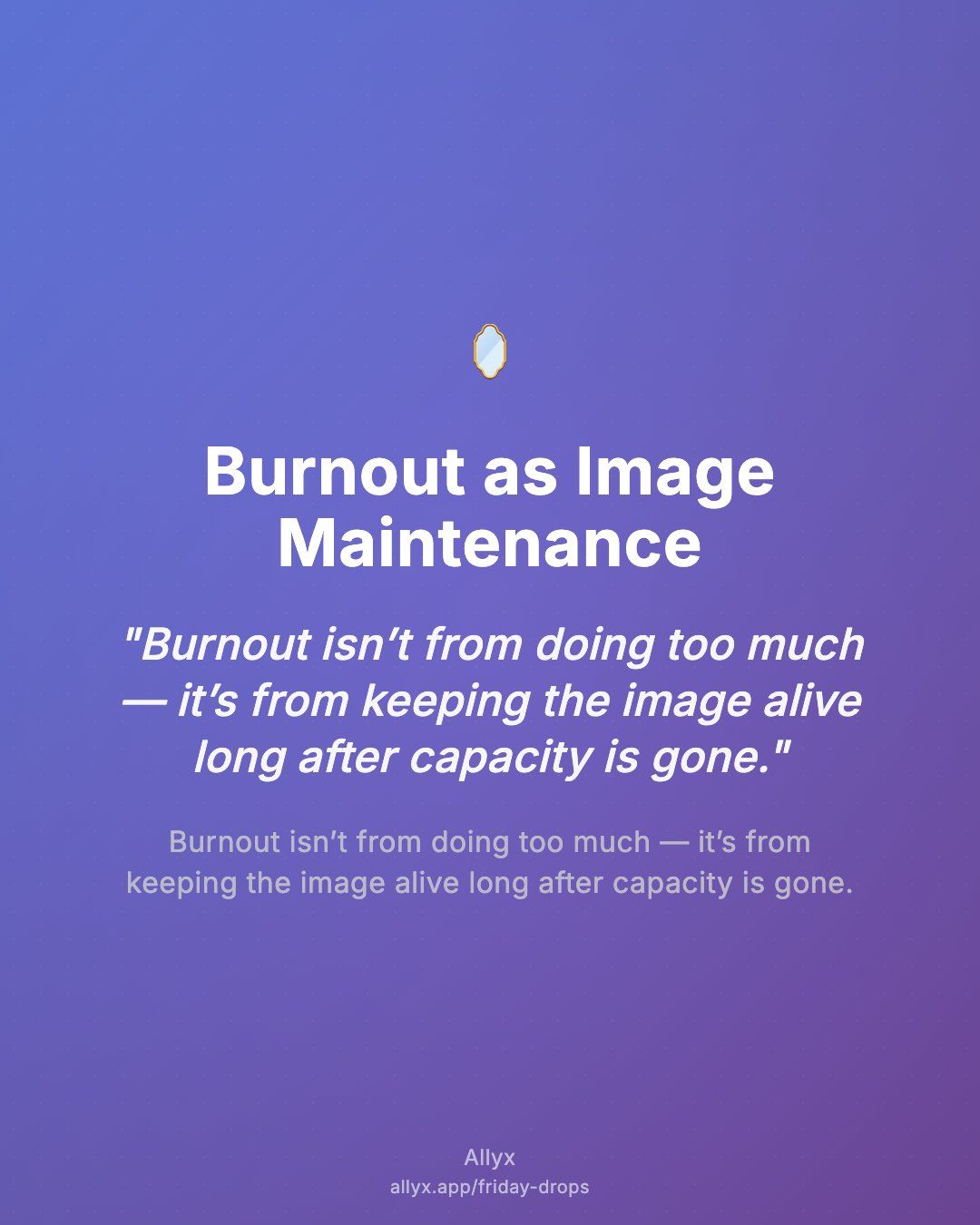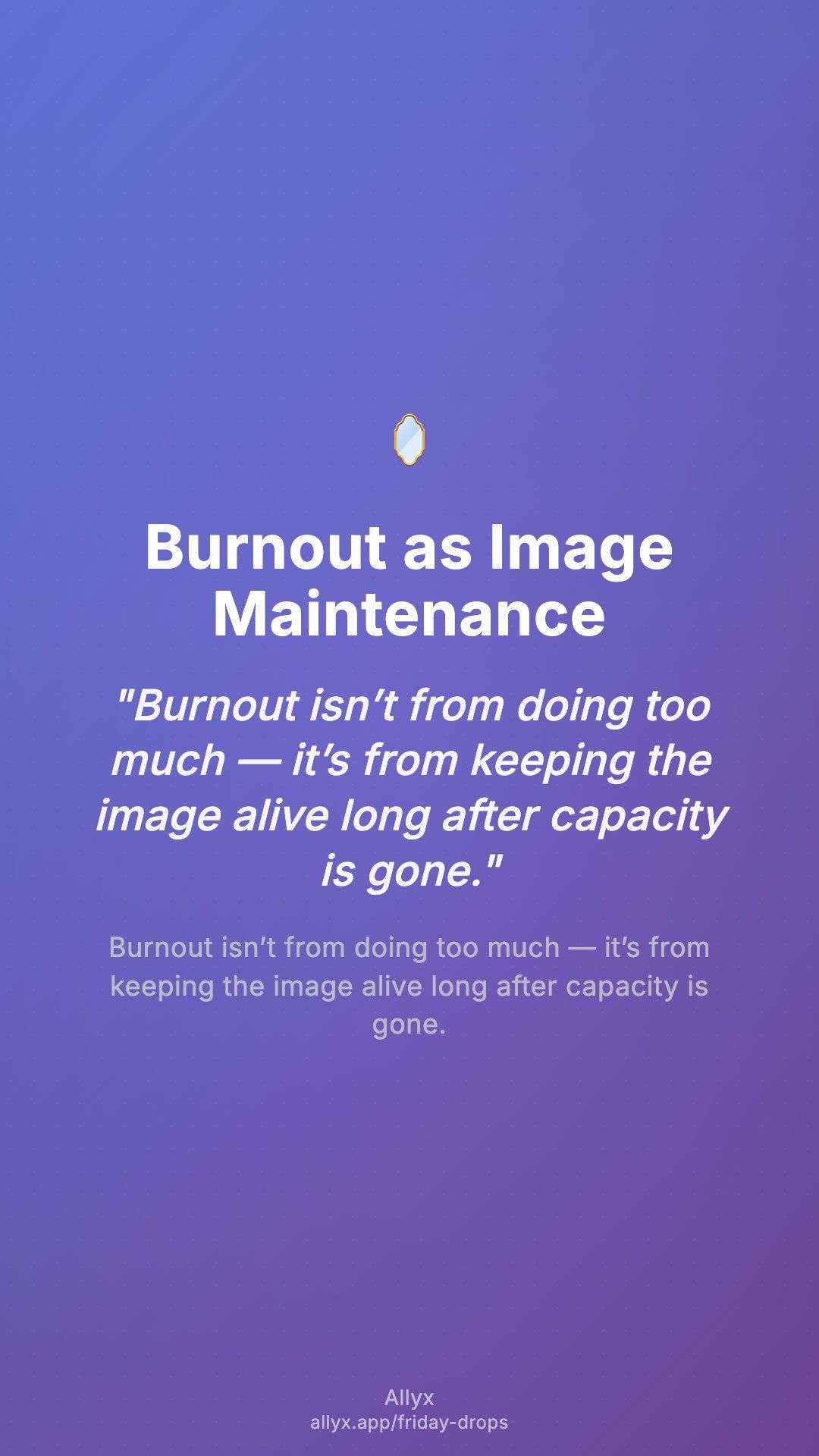Burnout as Image Maintenance
Burnout isn’t from doing too much — it’s from keeping the image alive long after capacity is gone.
Sunday, August 31, 2025
Metaphorical Narrative
A cracked mirror still hangs in the hallway. Each morning, the person forces themselves to polish it, to make the reflection appear whole. They paint over the cracks, adjust the lighting, angle it just right. But no matter how hard they try, the mirror is breaking. The effort isn’t about function — it’s about appearances. And every day the weight of pretending makes the cracks spread further.
Core Insight
Burnout often masquerades as overwork, but in truth it is over-performance. The endless polishing of image — the need to look competent, flawless, or tireless — creates a second job on top of the real one. Psychologists call this impression management: the act of constantly curating how others see you. Studies show it consumes just as much energy as hard problem-solving, silently draining executive functions.
This explains why many high-achievers burn out not from output but from upkeep. It isn’t the tasks themselves; it’s the effort spent pretending the cracks don’t exist. Ego whispers: Don’t show weakness. Keep shining. So you push harder, working against your own capacity to preserve a reflection that no longer matches reality.
The identity trap is thinking “I am the reflection I maintain.” But Observer Mode exposes the trick: you are not the cracked mirror, nor the polish rag — you are the one who can step back, stop polishing, and let the reflection be incomplete. Identity shift means leaving the performance and choosing to live as the whole person behind it.
Saturday Experiment
- Identify one area where you keep up appearances beyond your capacity.
- Stop polishing — let it be cracked.
- Watch what actually happens (often less disaster than ego predicts).
Sunday Reflection
Write in third person:
- Where is this person wasting the most energy on image maintenance?
- What would it look like if they allowed the cracks to show?

